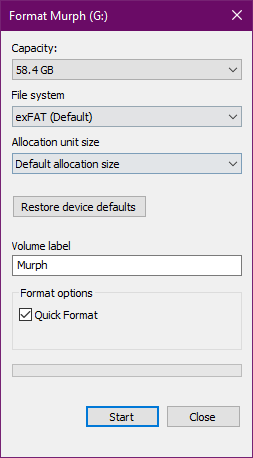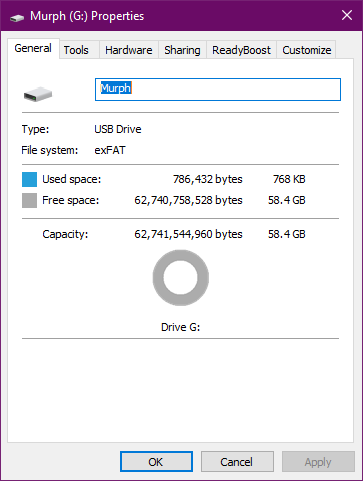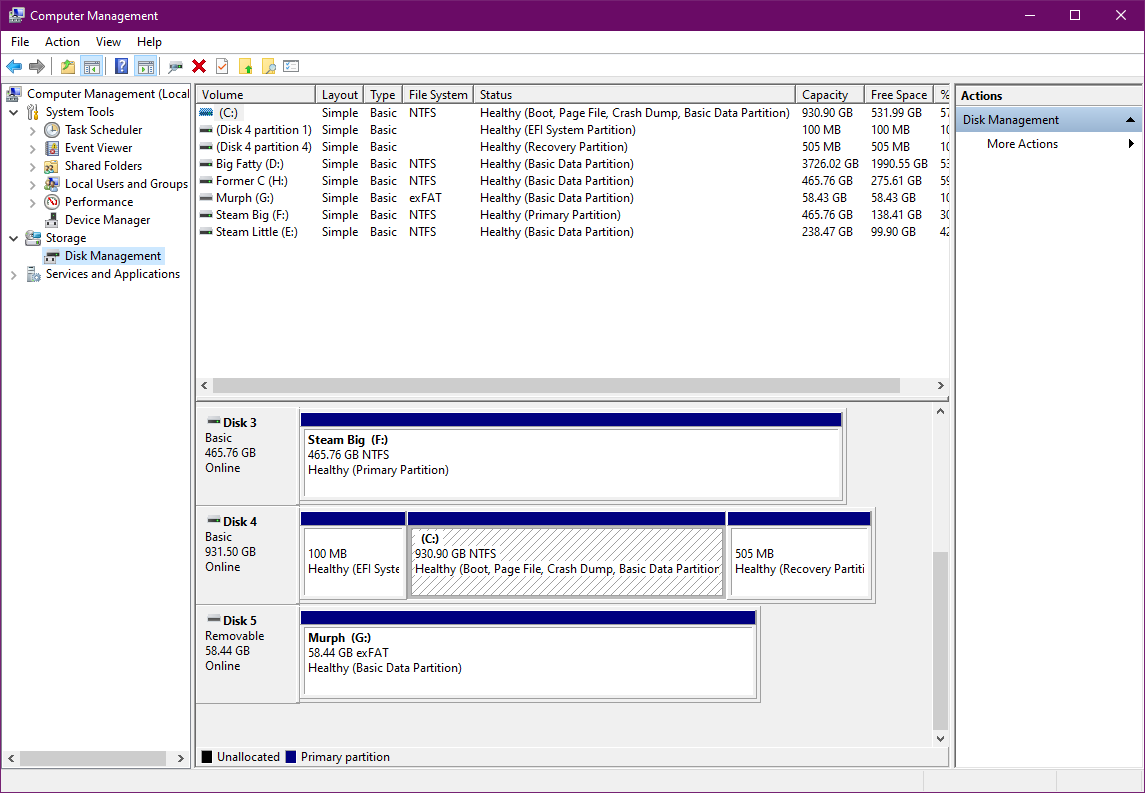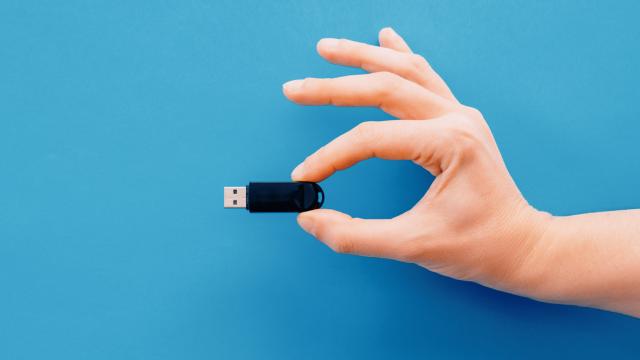Welcome back to another week of Lifehacker’s tech-advice column, Tech 911. And thanks to everyone who sent in their questions from last week’s prompt. If you didn’t catch it, don’t worry, you can still send your geeky questions in whenever you want. I will always have answers.
This week, we’re talkin’ storage. Specifically, what you should do if the (slightly expensive) USB flash drive you purchased isn’t giving you the full storage space you need. As Lifehacker reader “SK” writes:
My question is how to format a 64gb flash drive so both a pc and mac can use it. If you do exfat, that only formats 32gb. What do you do with the rest? Help please?
Unknown partitions can cut your free space considerably
I have a few ideas for why this could be happening, but I wanted to start by saying you’re doing the right thing by trying to format your flash drive as exFAT. Windows doesn’t let you format a flash drive larger than 32GB as FAT32, because Windows. That doesn’t mean you can’t, though. If you grab a third-party tool like EaseUS Partition Master, you can use that to format your flash drive as a 64BB FAT32 file system.
As always, this is only useful if you want that sweet Windows/Mac compatibility and don’t plan to drop individual files larger than 4GB on your flash drive — FAT32’s Achilles’ heel.
(If all this sounds like mumbo-jumbo to you, don’t worry. Storage devices can be formatted with different file systems, and they all come with their inherent strengths and weaknesses. This is typically something you don’t really have to worry about, save for the first time you ever format something, and generally it’s an issue more likely to affect you if you’re trying to use one storage device across two platforms. If you’re living in a Windows world, for example, just format your flash drive as NTFS and be done with it.)
There’s no reason why exFAT shouldn’t work, though, and I’d generally stick with that if I was going between Mac and Windows. You never know when you might push up against that FAT32 limit, and better to have that compatibility up front than to waste time copying files off your drive, reformatting to exFAT, and copying them all back.
As for why your drive’s size is cut in half when you format it as exFAT, I feel like that’s not a problem that’s inherent to exFAT. I have a 64GB flash drive right in front of me, in fact, and I just plugged it in and tried to reformat it as exFAT using Windows’ normal tool.

I didn’t run into any issues with those settings, which makes me suspect that something else might be going on with your flash drive.

Try checking to make sure that you’re not accidentally using multiple partitions on your flash drive, which can muck up how much space you’ll be able to access on your flash drive post-format. To do that, click on Windows 10’s Start button and type in “Computer Management.” Launch that app, and then click on “Disk Management” under the “Storage” header in the left-hand sidebar. You should see a screen that looks like this:

Look for your removable flash drive in that list of storage devices at the bottom, and make sure that it has a single partition — like what you see in the above image for the “G:” drive — rather than two. If the latter, right-click on them, select “Delete Volume,” and then right-click on that big chunk of space and select “New Simple Volume.” As part of the process, you’ll be asked to format the volume with a particular file system. Select exFAT, and you should be good to go.
I’d do the process, too, even if you’re staring at a single volume. Though, I can’t envision why you’d see just one 32GB volume and nothing else, not even a chunk of unallocated space, on a 64GB drive. This is where we start going into “throw any solution at the problem” territory, I think.
To that, I might also use a third-party tool (like the aforementioned EaseUS Partition Master) to do your formatting instead of Windows. Perhaps some kind of issue with the operating system is causing your storage chaos, and that’s something a third-party app can get past. Still, I think the real root of your problem is an extra partition you’re just not noticing. Fix that, and you should have a full 64GB of space that you can format as exFAT with no issues.
Do you have a tech question keeping you up at night? Tired of troubleshooting your Windows or Mac? Looking for advice on apps, browser extensions, or utilities to accomplish a particular task? Let us know! Tell us in the comments below or email [email protected].

Leave a Reply
You must be logged in to post a comment.